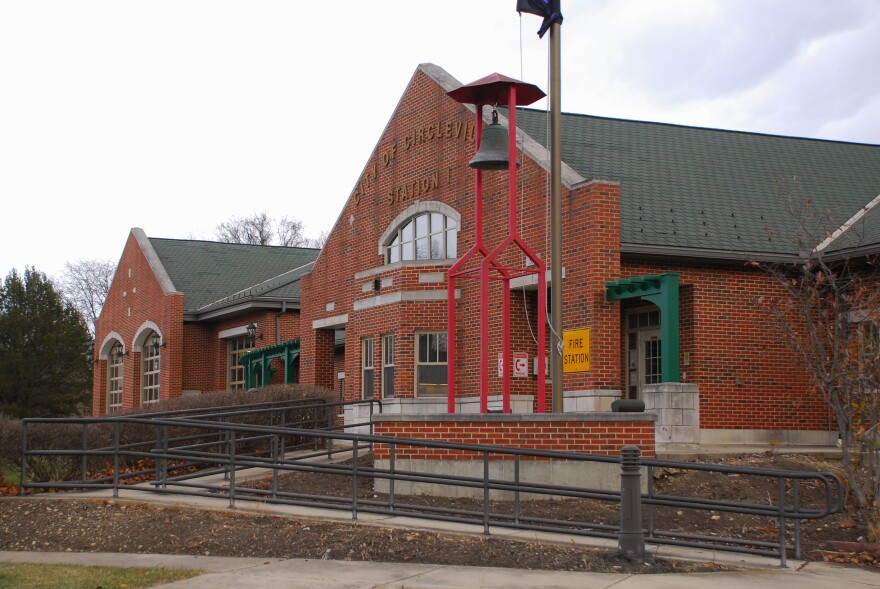Circleville residents are more than familiar with the rumble of railroad tracks, as trains carting cargo pass through their town. Up to 60 trains travel through the tiny city every day.
Leia Frazier lives in Williamsport, but shopping with a friend in downtown Circleville, she bemoans the traffic. Her 15 minute-commute is regularly lengthened when she’s held up by a train.
“Yeah, trains, there’s a lot of them, and they can make people late for work,” Frazier says. “It can kind of be a pain. It backs up traffic. Especially because I’m on the other side of the tracks.”
The city of Circleville has a train problem. The manufacturing city contains 18 railroad crossings in less than 7 square miles; 10 of these crossings are mainline railways. Those rails cut the city in half, but more alarmingly, they create problems for first responders, who find themselves stranded.
Too Many Trains
CSX, a Florida-based railway company, operates an average of 15-20 trains through Circleville each day. A spokesperson says CSX frequently transports light trucks, passenger vehicles, iron ore and coal. Norfolk Southern operates around 20 trains a day, but that number can reach upwards of 40 depending on the time of year and weather.
Niki Crosby, who used to live in Circleville until she moved 20 miles outside of the city, says the trains often interfere with her trips to work. Crossings can add an extra 20 minutes to Crosby's commute.

“The only thing we really get aggravated about trains is like, being on one side and not being able to get to the other side, and running late with a train and have to get to a bus stop,” Crosby says.
Rail traffic is more than an inconvenience. The tracks isolate the city’s south end from Circleville’s main fire station.
“If there’s a fire or anything and they don’t have enough fire trucks down there or enough squads up, then the people in the south end’s done,” Crosby says. “So we worried about that a lot when I lived there.”
Circleville fire chief Mike Zigarelli worries a lot about that, too. If a fire breaks out when a train is traveling through, the trucks have to wait, just like every other vehicle.
“It would probably be five to six minutes before we could get somebody on the scene, whereas it should only take two,” Zigarelli says. “In today’s fires, the fuel loads in the houses and stuff has changed. Really in that amount of time you can start seeing a building collapse and stuff like that.”
"Watched The Place Burn Down"
In the spring, Circleville reopened its south side fire station, which it closed originally because of budget cuts. Two firefighters are stationed there, but Zigarelli wants to see that number double.

“So before we re-opened our southern station, all of our resources were on the wrong side of the track. If anything happened on that side, we’ve been blocked from getting resources there,” Zigarelli says. “We have the station open, I need to see more people down there. Right now, our funds don’t allow us to hire more people. But ultimately I’d like to see that be a four-man station or more.”
Circleville public service director Don Sherman says with the length of modern trains, one train can block all 10 crossings.
“It’s not unusual to be sitting at a crossing with a train going southbound, and before that southbound train is gone, a northbound train comes through,” Sherman says. “Fire chief has told me of one or two times that he’s actually been stuck by the train and watched the place burn down. Police officers have had the same problem.”
Over The Tracks
Sherman fears the problem could get worse. This week, Norfolk Southern will finish an expansion project at Rickenbacker Intermodal Facility outside Columbus, which will increase the total length of the facility’s lift tracks by more than 40 percent.
“That means most likely they’re going to double the number of trains coming through town,” Sherman says.
He's working with the Norfolk Southern railroad and the Ohio Rail Development Commission (ORDC) to alleviate the problem. A permanent fix would be to dig underpasses or build bridges over the tracks.
“We’re crossing the tracks at grade," Shermans ays. "So we’re actually driving across them. What the grade separation is building is almost like a freeway overpass over the tracks."

That means moving tracks, and in some cases taking over homes and buildings by eminent domain and demolishing them. The estimated cost: at least $5 million dollars, according to a report from the ORDC.
Norfolk Southern has agreed to contribute 5 percent of the cost. According to spokesperson Jonathon Glass, the funding offer for grade-crossing closures in Circleville is $203,000. In a letter sent this July, the ORDC described this offer as “at the high range” of the formula for the specific crossings being closed.
Sherman says that’s not enough money.
“They don’t contribute to the cost of demo-ing houses, putting the ramps up, they only give us 5 percent towards the crossing of the tracks," Sherman says. "Which we’re trying to negotiate that up higher."
It’s a problem that will take several years to fix. Circleville officials will meet with the rail commission next month to discuss next steps.






